Diversity and inclusion have been cornerstones of most modern workplaces, but it’s important to understand that genuine inclusivity extends beyond cultural or gender diversity – it encompasses accessibility for differently-abled individuals, too.
Creating an accessible workplace ensures an inclusive environment while simultaneously offering significant tangible benefits. Promoting an accessible and inclusive work environment isn’t just the right thing to do; it’s a smart business move that benefits both employers and employees. This phenomenon is more vital now as companies increasingly entice their employees to return to physical workplaces post-Covid. In these changing times, we need to make our workplaces more appealing, adapted for access by all, and to reduce the risk of having an inaccessible workplace.
1. Improving Workplace Accessibility
To ensure hesitation turns into motivation on the part of employees returning to office, businesses must foster an accessible and inclusive environment. It begins with understanding that accessibility extends beyond physical adaptations like ramps or wider doorways. It’s about creating an environment where everyone, regardless of their abilities or disabilities, can function optimally.
One significant and often overlooked area is clear and accessible communication. Businesses should aim for easy-to-read signs, audible announcements, and induction hearing loops for hard-of-hearing staff. Businesses can also incorporate assistive technology, such as screen readers or speech recognition software, to facilitate smoother work processes.
The digital realm poses its own set of challenges. Make sure your digital tools and systems are designed with consideration for those with disabilities in mind. Use accessible PDFs, websites, and online applications that meet universal design principles.
2. Financial Benefits of Good Access
Investing in access inclusivity pays off, both tangibly and intangibly. Economically, businesses with accessible features attract a wider customer base and talent pool. People with disabilities represent a significant portion of the global population, and by creating an inclusive environment, you tap into an underutilized pool of potential employees and customers.
The decision to make your business accessible is not only morally right but also financially beneficial. According to research highlighted on spinal.com.au, organizations that prioritize accessibility tend to have improved staff retention rates, reduced recruitment costs, and an expanded customer base.
According to a recent research review update from JobAccess, the Australian Government’s disability employment hub, employers are reaping $40 in savings for every dollar they invest in workplace adjustments to support staff with disabilities. This finding highlights the significant monetary benefits that come from making necessary accommodations and improvements in the workplace. It’s encouraging to see the positive impact of such adjustments on both employees with disabilities and the businesses themselves.
Moreover, an accessible environment can significantly enhance staff productivity and reduce turnover rates. Employees who are appropriately supported and comfortable in their work environment tend to be more loyal, productive, and bring fresh perspectives and innovative solutions to the table.
3. Enticing Workers Back Post-Covid-19
As the world transitions into post-pandemic norms, the way we work has been redefined. Most significantly, it has normalized remote work, prompting employers to make the physical workplace more appealing for employees to return.
A comprehensive and appealing office environment incorporates the needs of all their employees. Consider installing automatic doors, tactile indicators in pathways, or adjustable workstations that cater to all. Creating comfortable, practical and accessible spaces, such as meeting rooms or social areas, sends an inviting message to workforce.
Furthermore, fostering a culture of inclusivity encourages loyalty, which can be crucial in enticing people back into the office. An open dialogue about accessibility, rigorous disability awareness training, and promotion of a positive attitude towards disabilities can build a strong community that appreciates diversity.
4. Reducing Risk
Finally, an accessible workplace is essential to avoid risks and reap rewards. Non-compliance with accessibility regulations can lead to financial and reputational damage. An inaccessible workplace is a barrier preventing engagement from a diverse talent pool; and an unwelcoming environment can affect employee morale, productivity, and retention.
Bringing about change involves embracing accessibility not as an afterthought but as an integral part of your organization’s strategy. Training, integrating accessibility features, and regular audits of the environment for accessible performance are helpful steps.
Remember, a disability-inclusive workplace isn’t just a legal necessity – it is a potential for competitive advantage and business growth. Let us all realize the dimension of our responsibilities and opportunities. Let us aim for universal design and inclusion.
According to the Include Ability Guide (https://includeability.gov.au/sites/default/files/2021-07/04_-_includeability_-_guide_-_creating_an_accessible_and_inclusive_workplace.pdf), adopting best practices for inclusivity not only boosts performance by 28% but also increases team collaboration by 29%.
The commitment to accessibility should not be an afterthought but rather a core principle guiding business operations. By fostering an environment suited to all employees, included those with disabilities, we can take a step into a future in which everyone is given an equal shot at success, regardless of their physical abilities.

Recent blogs
Enhancing Communication: The Role of Hearing Augmentation
In the realm of accessibility and inclusivity within professional environments, ensuring effective communication is paramount. [...]
Read moreSep
Accessible, But Locked: How Councils Utilise MLAK Systems
Public toilets are essential infrastructure, especially for people with disabilities. Yet in many areas, access [...]
Read moreJul
The Importance of the Hidden Disability Sunflower
The Importance of the Hidden Disability Sunflower You may have recently noticed people wearing a [...]
Read moreJul
Review of Accessibility Provisions at Vivid Sydney 2025
Vivid Sydney has once again dazzled audiences, wrapping up another spectacular year of immersive light [...]
Read moreJun
The Good, the Bad, and the Ugly of Platform Lifts for Accessibility
The Good, the Bad, and the Ugly of Platform Lifts for Accessibility Accessibility is a [...]
Read moreMay
Insights into the Updated Disability (Access to Premises – Buildings) Amendment (2024 Measures No. 1) Standards 2024
Insights into the Updated Disability (Access to Premises – Buildings) Amendment (2024 Measures No. 1) [...]
Read moreMar